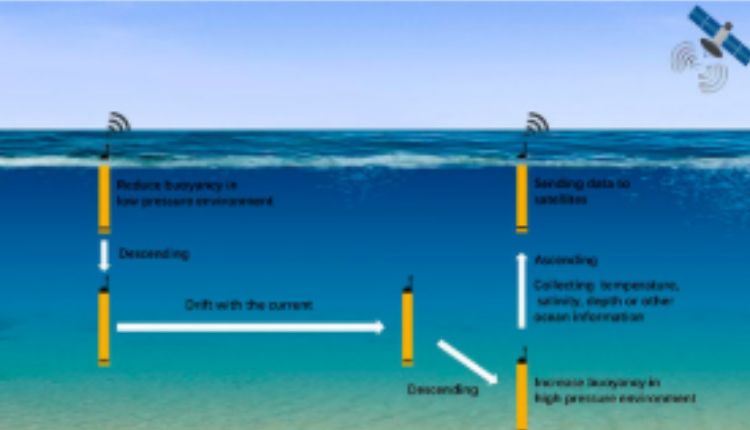Underwater Buoyancy Systems is one of the most complex operations in marine engineering, requiring precision, skill, and the right tools to ensure success. Whether it’s a shipwreck, a lost cargo container, or an environmental cleanup operation, effective underwater recovery often hinges on one key element—buoyancy systems. These systems provide the lift and support needed to safely maneuver objects, and their role in underwater projects cannot be overstated.
This blog will explore what buoyancy systems are, why they are vital in underwater recovery projects, and how they improve safety, efficiency, and environmental outcomes.
What Are Buoyancy Systems?
Buoyancy systems are specialized tools designed to create lift underwater. They work on the principle of displacement—introducing air or other gases into a sealed container to reduce the overall density of an object. This controlled buoyancy helps lift objects from the seabed to the surface or maintain them at intermediate depths.
Common types of buoyancy systems used in underwater recovery include:
- Underwater Lift Bags – Durable, inflatable bags that can provide lift for objects of varying weights.
- Foam Buoyancy Modules – Rigid blocks of foam that offer permanent buoyancy for specific needs.
- Variable Buoyancy Units – Systems that allow for precise control of buoyant force, ideal for delicate operations or complicated recoveries.
Among these solutions, underwater lift bags stand out as versatile and cost-effective options widely used across industries.
Why Buoyancy Systems Are Essential in Underwater Recovery
1. Providing Lift for Heavy Objects
One of the primary reasons buoyancy systems are indispensable is their ability to lift heavy objects that would otherwise be immovable. From large shipwreck debris to submerged vehicles, buoyancy systems can provide the necessary force to help transport these objects to the surface without the need for excessive manpower or additional machinery.
Lift bags, for instance, can handle weights ranging from a few hundred pounds to several tons, making them an ideal choice for recovery teams.
2. Ensuring Precision and Control
Underwater recovery often involves intricate operations in challenging environments. The ability to precisely control buoyancy is critical to maintaining stability and preventing additional damage to objects being recovered. Variable buoyancy systems allow operators to make minute adjustments, ensuring delicate items remain safe and intact throughout the process.
3. Enhancing Safety
Marine work is inherently hazardous, and underwater recovery presents its own set of risks. By reducing the physical strain on divers and minimizing the reliance on heavy machinery, buoyancy systems enhance both diver safety and overall project efficiency. Inflatable options, such as lift bags, are particularly easy to transport and deploy, further reducing risks during setup and operation.
4. Improving Operational Efficiency
Time is a critical factor in underwater projects—prolonged operations can lead to increasing costs and higher risks. Buoyancy systems streamline the recovery process by simplifying the lifting and transport of submerged objects. For example, instead of requiring additional cranes or vessels, lift bags allow teams to achieve the same results with less reliance on expensive equipment.
5. Minimizing Environmental Impact
Environmental sustainability is a growing concern in underwater operations, particularly in cases involving shipwreck removals or pollution cleanup. Buoyancy systems help mitigate disruptions to marine ecosystems by allowing for controlled recovery with precision, reducing the risk of damaging sensitive environments.
Reusable systems, such as lift bags, also align with eco-conscious goals by enabling multiple uses without generating additional waste.
Applications of Buoyancy Systems in Underwater Recovery
Salvage Operations
Buoyancy systems play a central role in marine salvage projects. From refloating sunken vessels to recovering lost cargo containers, the ability to lift and stabilize objects is crucial. Lift bags are commonly used due to their versatility and ease of deployment, helping to retrieve objects even in deep waters.
Environmental Cleanup
Underwater recovery isn’t limited to retrieving lost items. It’s also vital in environmental efforts like removing debris from rivers, lakes, or oceans. Using buoyancy systems allows contractors to haul up pollutants while minimizing impacts on fragile underwater ecosystems.
Construction and Maintenance
Pipe installations, bridge construction, and underwater infrastructure repairs also depend on buoyancy systems. By providing stable and adjustable support, these systems facilitate safe and precise placement of heavy construction materials.
Choosing the Right Buoyancy Solution
When selecting a buoyancy system, it’s essential to consider factors such as object weight, depth, and environmental conditions. For example:
- Weight Capacity – Ensure the system can accommodate the combined weight of the object and any additional lifting equipment.
- Durability – Saltwater and extreme pressure can degrade materials quickly. Investing in high-quality, corrosion-resistant systems will improve long-term performance.
- Flexibility – Opt for equipment that is easy to transport and suitable for varying project types.
The Future of Buoyancy in Underwater Recovery
Innovations in materials and designs are enhancing the effectiveness of buoyancy systems. For instance, smarter materials with improved corrosion resistance and AI-controlled buoyancy units capable of self-adjustments are shaping the future of underwater recovery technology.
By incorporating these advancements, marine engineers and contractors can expect even safer, more efficient, and environmentally responsible operations in the years to come.
Buoyancy systems stand as an indispensable part of any underwater operation. By ensuring precision, increasing safety, and streamlining processes, they represent the backbone of effective underwater recovery projects. Firms that invest in high-quality buoyancy solutions will find themselves better equipped to meet the challenges posed by the underwater world.
- Underwater recovery technology
- systems
- Marine engineering solutions
- AI-controlled buoyancy units






